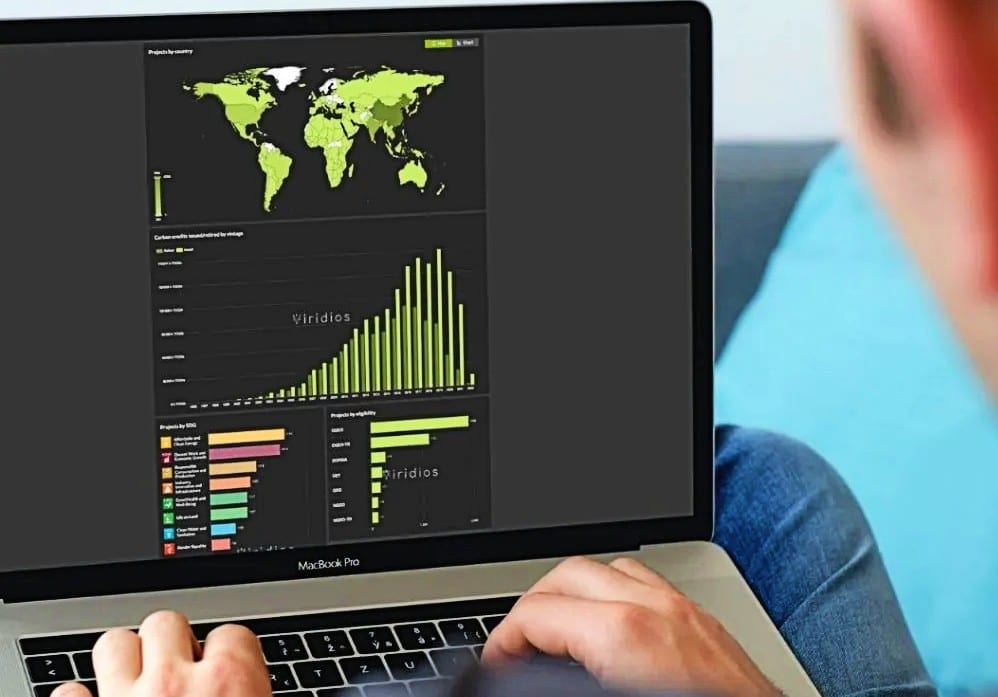January 2024 has witnessed more retirements compared to the same month last year, and it is projected to exceed 2022 retirements, according to Viridios AI report, a voluntary carbon credit market pricing and data provider.
Viridios is a climate tech platform providing carbon credit prices, valuations and project data to boost voluntary carbon market transparency.
Overall, trading in the Voluntary Carbon Market (VCM) was relatively light in the past week.
Renewable energy credits (RECs), particularly from India, have experienced price increases, leading to a shift in demand from Chinese to Indian credits. In the native species removals market, activity is slow, but a premium is emerging for projects in this category.
However, the REDD+ segment is facing minimal activity, both in the market and over-the-counter, indicating subdued interest in this nature-based category.
- RELATED: Is REDD+ Dead? A Deep Dive into the Flaws and Recommendations for REDD+ Project Methodologies
Some sources indicate that political risks may not immediately impact pricing due to low credit supply. In contrast, others report current impacts on the Corresponding Adjustment market, with fluctuating premiums for cookstove credits.
For instance, the Rwandan Cookstove project saw a significant jump from $5.85 to $14 for vintage 2021. Cambodia released its Article 6 operations manual, though not yet published, for a water purifier project and an improved cookstoves project.
Riding the Wave: January Retirements Soar
The projects in Viridios analysis come under three major categories: Pre-registration (Development, Review), Registered (Registered, Operational, Verified, Completed, Renewal, Paused), and Issuing.
As seen below, India has the most new projects in the pipeline while household devices got the most count.
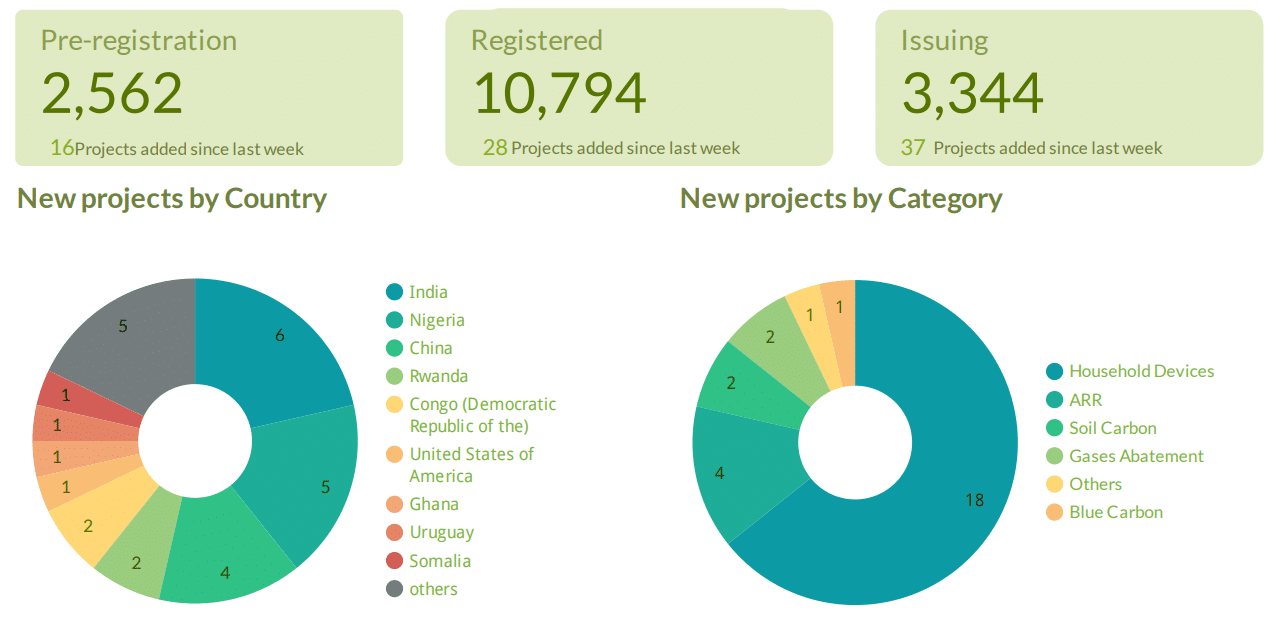 Per category, the REDD/REDD+ projects include efforts that avoid both planned and unplanned deforestation and degradation. Meanwhile, the ARR projects, which has the most count, involve various activities, including Afforestation, Reforestation, and Revegetation initiatives.
Per category, the REDD/REDD+ projects include efforts that avoid both planned and unplanned deforestation and degradation. Meanwhile, the ARR projects, which has the most count, involve various activities, including Afforestation, Reforestation, and Revegetation initiatives.
REDD+ Projects
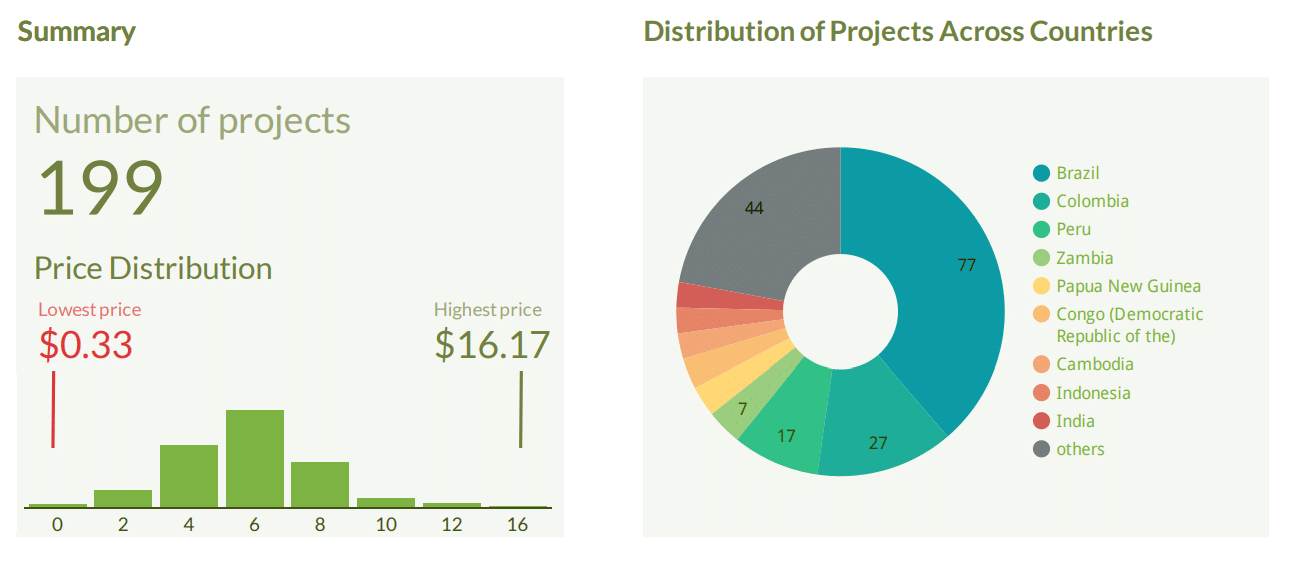
ARR Projects
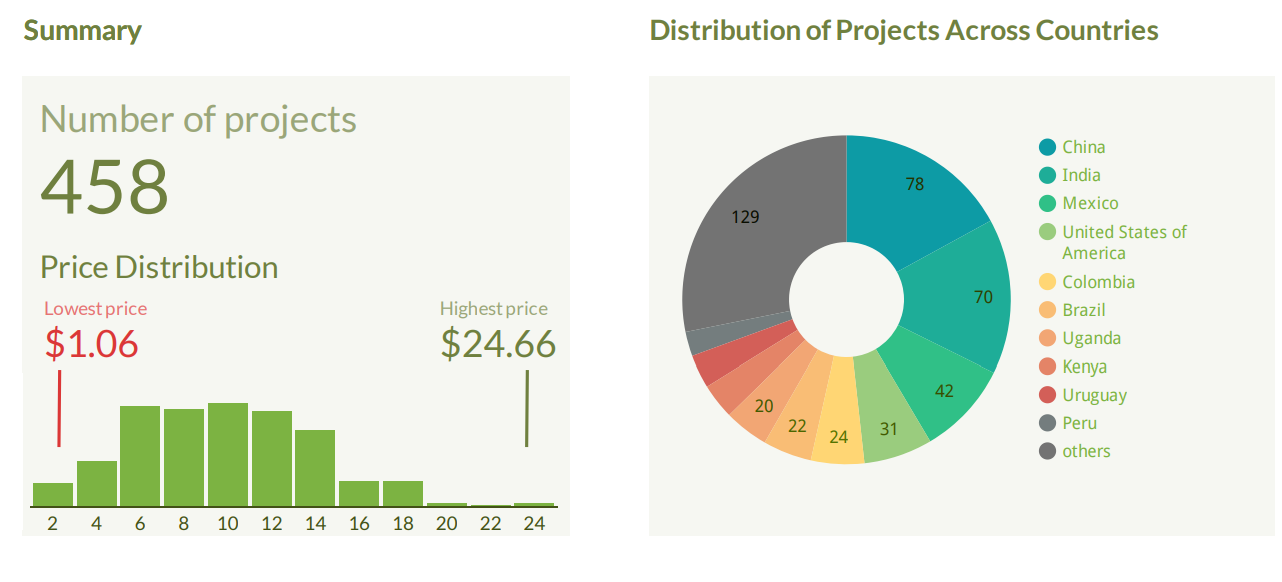 Most REDD+ projects, priced highest at $16.17, are in Brazil while ARR, with a $24.66 highest price, are most dominant in China.
Most REDD+ projects, priced highest at $16.17, are in Brazil while ARR, with a $24.66 highest price, are most dominant in China.
Technology projects (TECH) are related to Renewable Energy which include Biomass, Biofuels, Hydro, Solar, Wind, and Geothermal. While it has the largest number of projects, >7,500, its highest price at $7.11 is much lower than nature-based.
The report also provides insights on credit issuances and retirements in metric tonnes per month. The chart below shows a comprehensive view of cumulative credits issued by month over the past 3 years. Highest issuances are in December, both for 2022 and 2023.
The same trend can be observed in terms of credit retirements. Most credits are retired in December for both years, with more than 150 metric tonnes.
When it comes to issuances by recognized standards, Verra has the biggest share, followed by Gold Standard (GS). The same is true for the number of credits retired by standard.
Revealing a Dynamic Carbon Credit Market
For market activity, the majority of the credit volume based on quotations ranges from 0-50,000 credits. This trend applies to all weeks covered from November 2023 to January 2024 as shown below.
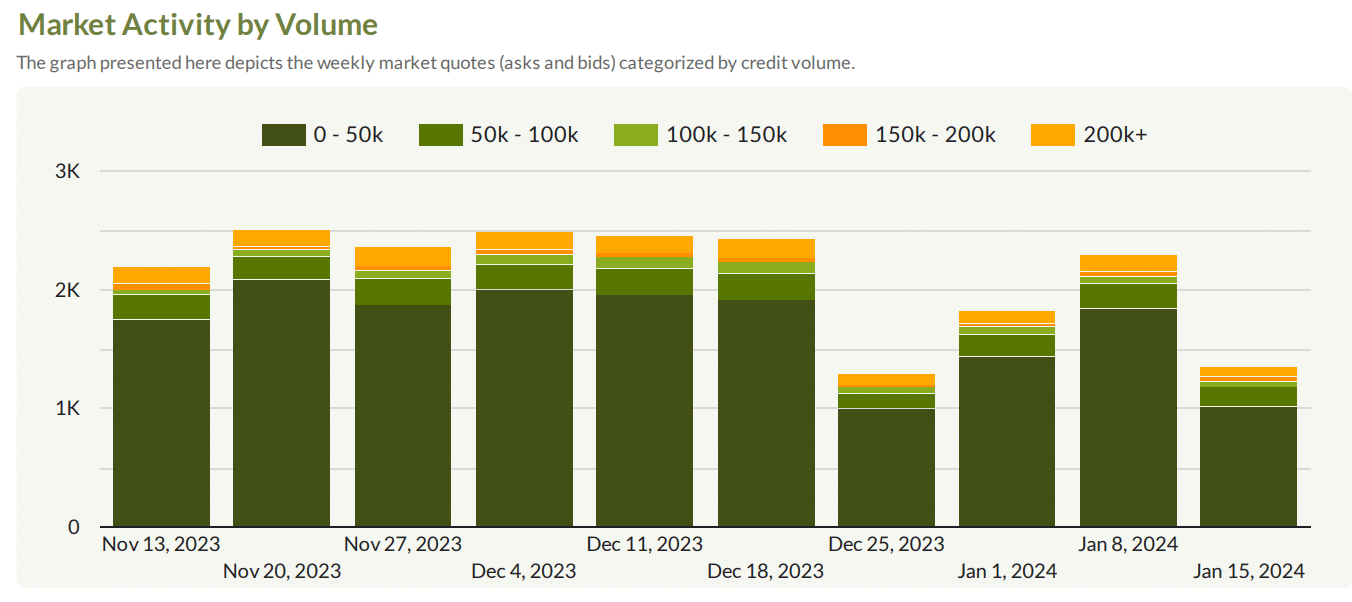 Breaking down the market volume per category, Nature-Based versus Technology, the latter has the largest share. This could perhaps be due to the intensifying scrutiny over nature-based carbon credit offsets, which faced high-profile investigations last year.
Breaking down the market volume per category, Nature-Based versus Technology, the latter has the largest share. This could perhaps be due to the intensifying scrutiny over nature-based carbon credit offsets, which faced high-profile investigations last year.
On the other hand, carbon removal technologies (direct air capture) received great interest from investors and government support globally.
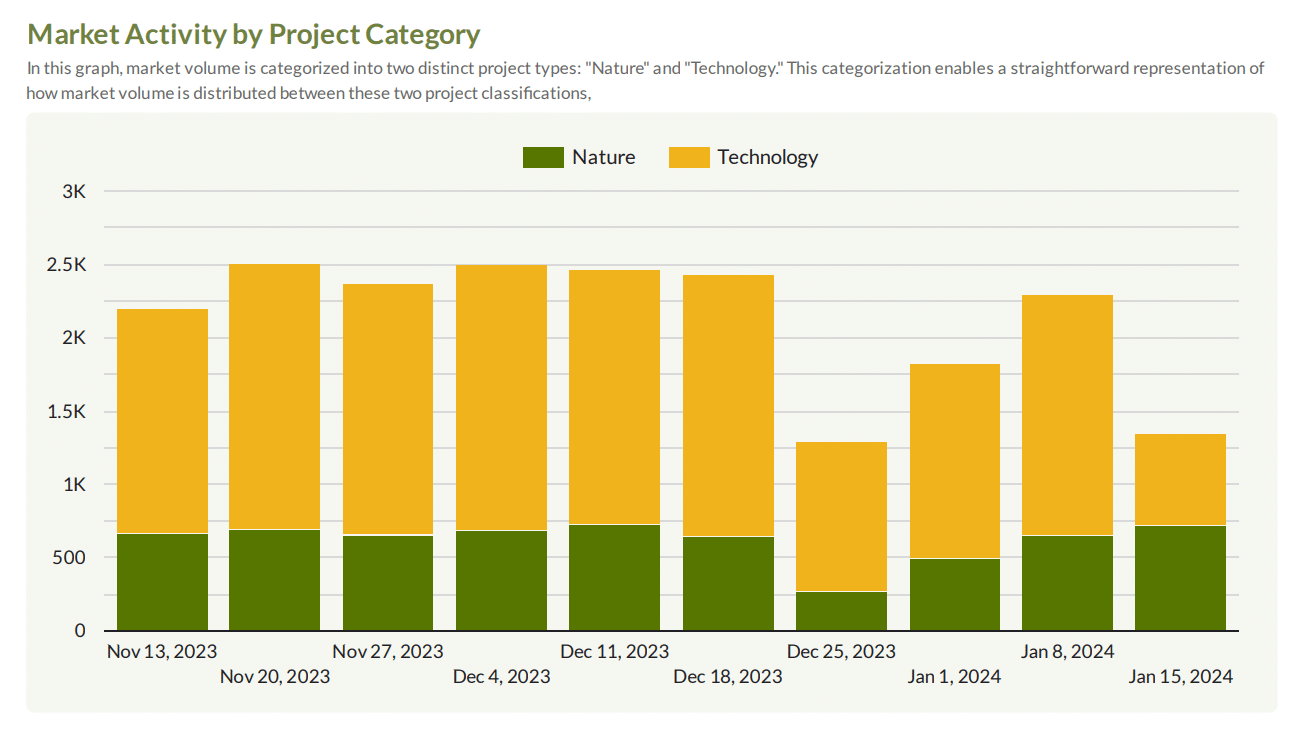
Additionally, Viridios report also looked at the VCM activity by major registries, including Verra’s VCS, GS, ACR, CAR, and CDM. ACR refers to American Carbon Registry, CAR means Climate Action Reserve, and CDM stands for Clean Development Mechanism.
Weekly data reveal that VCS and ACR almost have the same footing when it comes to carbon credit volume.
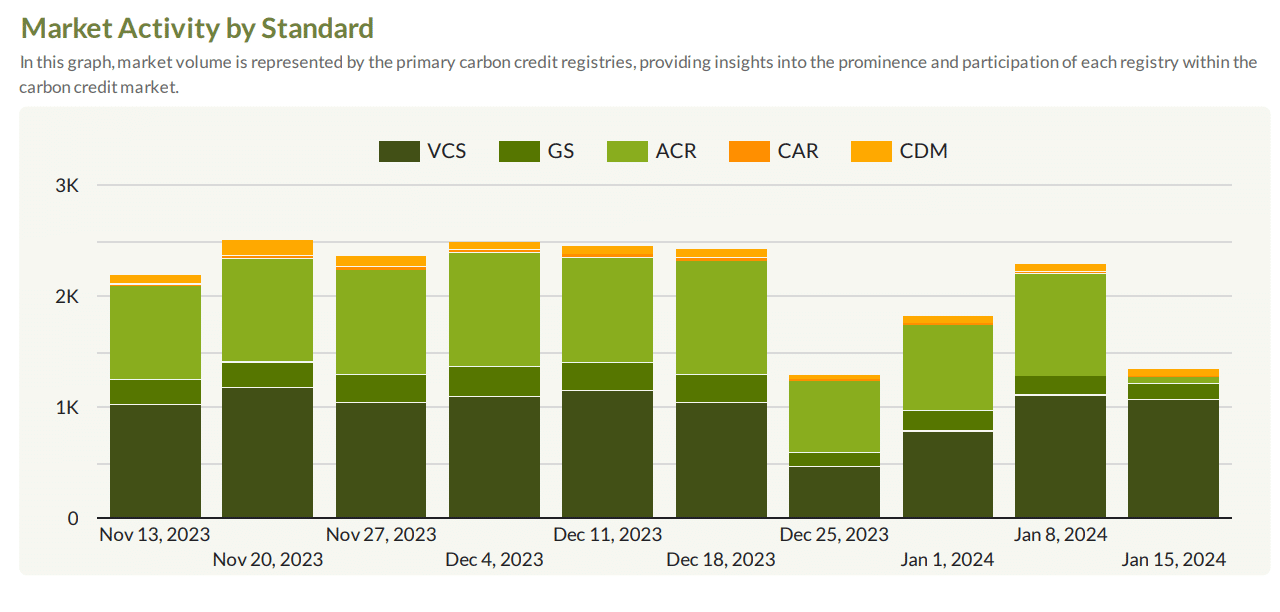
Lastly, the report presents a geographical analysis on volume by continental regions. The North American region snags the largest market volume per week, followed by Asia. Notably, in the recent week, the Asian region got the most volume with Africa coming second.
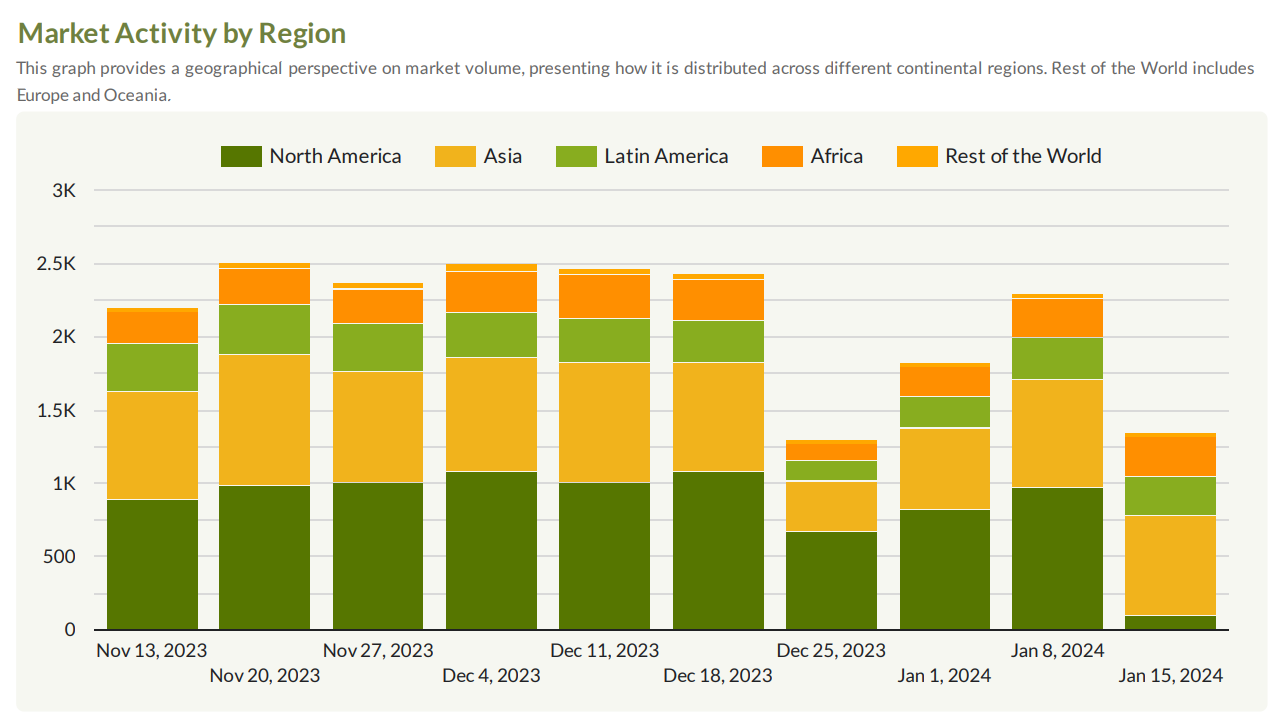
In the opening month of 2024, Viridios AI’s insightful report reveals a dynamic carbon credit landscape marked by a significant upswing in retirements and a distinct shift towards Indian RECs. The analysis delves into various project categories, painting a vivid picture of the evolving trends shaping the voluntary carbon market.

